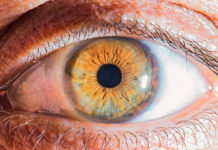 Women are almost twice as likely to experience anxiety as men, according to a review of existing scientific literature, led by the University of Cambridge. The study also found that people from Western Europe and North America are more likely to suffer from anxiety than people from other cultures.
Women are almost twice as likely to experience anxiety as men, according to a review of existing scientific literature, led by the University of Cambridge. The study also found that people from Western Europe and North America are more likely to suffer from anxiety than people from other cultures.
The review also highlighted how anxiety disorders often provide a double burden on people experiencing other health-related problems, such as heart disease, cancer and even pregnancy.
Anxiety disorders, which often manifest as excessive worry, fear and a tendency to avoid potentially stressful situations including social gatherings, are some of the most common mental health problems in the Western world. The annual cost related to the disorders in the United States is estimated to be $42.3 million. In the European Union, over 60 million people are affected by anxiety disorders in a given year.
There have been many studies looking at the number of people affected by anxiety disorders and the groups that are at highest risk, and in an attempt to synthesise the various studies, researchers from the University of Cambridge’s Institute of Public Health carried out a global review of systematic reviews. Between 1990 and 2010, the overall proportion of people affected remained largely unchanged, with around four out of every 100 experiencing anxiety. The highest proportion of people with anxiety is in North America, where almost eight out of every 100 people are affected; the proportion is lowest in East Asia, where less than three in 100 people have this mental health problem.
Women are almost twice as likely to be affected as men, and young individuals – both male and female – under 35 years of age are disproportionately affected.
The researchers also found that people with other health conditions are often far more likely to also experience anxiety disorders. For example, around one in ten adults (10.9%) with cardiovascular disease and living in Western countries are affected by generalized anxiety disorder, with women showing higher anxiety levels than men. People living with multiple sclerosis are most affected – as many as one in three patients (32%) also have an anxiety disorder.
According to first author Olivia Remes from the Department of Public Health and Primary Care at the University of Cambridge: “Anxiety disorders can make life extremely difficult for some people and it is important for our health services to understand how common they are and which groups of people are at greatest risk.
“By collecting all these data together, we see that these disorders are common across all groups, but women and young people are disproportionately affected. Also, people who have a chronic health condition are at a particular risk, adding a double burden on their lives.”
Obsessive compulsive disorder (OCD) – which is an anxiety disorder characterized by obsessions and compulsions – was found to be a problem in pregnant women and in the period immediately after birth. In the general population, only one in a hundred people are affected by OCD, but the proportion with the disorder was double in pregnant women and slightly higher in post-partum women.
Source: Olivia Remes, Carol Brayne, Rianne van der Linde, Louise Lafortune. A systematic review of reviews on the prevalence of anxiety disorders in adult populations. Brain and Behavior, 2016; DOI: 10.1002/brb3.497














